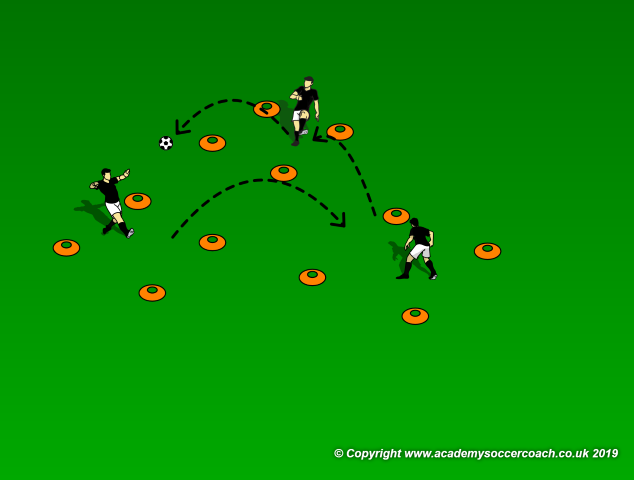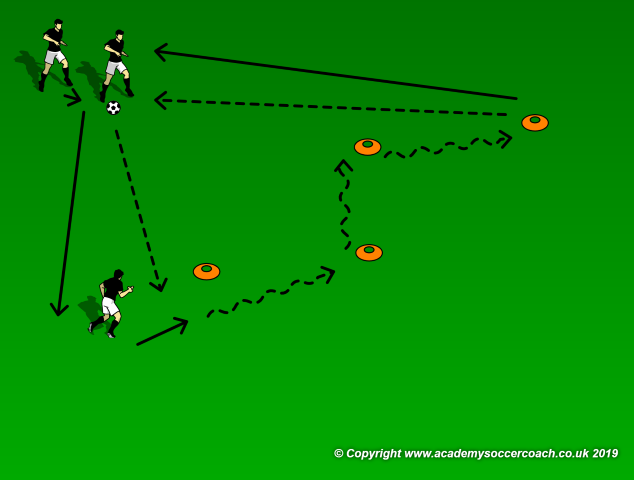By Mike Smith
Question - Is it appropriate to play older teams on a regular basis during a season?.
Short Answer : Yes, especially after U13. There is more to the story, which I will address in a moment, but for all practical purposes after age 11 ( 6th grade) any soccer player who is going to be competing in Middle School, Junior Varsity, Varsity and Collegiate play will be faced with competing against older, bigger, stronger and more experienced competition. In Kentucky ( where I coach ), middle school teams are most commonly made up of players from 6th - 8th grades; ages 10-14. Junior Varsity high school teams can field players from 7th – 10th grades; ages 11-16 and of course Varsity teams in high school have age ranges from 13-18 years old. So, simply because this variance in age range is a reality of middle school, high school and collegiate play “Yes”, playing up in age is appropriate.
The exact question posed was this: “ Is it appropriate to play older teams on a regular basis season? My sons a U 14 but two players on his team are U15 so the team has to play in the U15 age group. They haven't been having much success. Do you think it would be best to move the two older players up into their own age group so our team can play U14?”
Obviously this difference in age – and more to the point size, strength, speed and experience – can show up negatively on the scoreboard, however I would encourage a broader definition of “ doing well”. There are so many more measures of success in youth soccer and youth sports in general than just wins and losses. Think about how successful classroom education would be if the only measure was Pass/Fail – or A+ / F.
Now, there are individual development issues to consider. IF your athlete is simply becoming burnt out or is unable to handle the journey through being on the younger side of the age bracket then I would absolutely consider finding an age appropriate team and league until the mental, emotional and sometimes physical aspects all line up to enable the player to compete against older competition. This is a player / parent decision. Still, my first advice would be to focus on the marks which show progress other than the scoreboard AND try learning various skills which complement players who may be smaller in stature and/or less aggressive than many of the other players they compete against. For example:

Perhaps the most common time differences in size, speed, strength, etc.. are noticeable is during what I call “ the in between times”. My first real soccer “hero” was George Best, and he was a master of either keeping the ball very close, or playing it away from pressure at speed as if pushing it down a path only he could see. I was on the small side as a player as well; I actually grew 8 inches and gained 50 lbs AFTER graduating high school. ( I am 5’8” now, so that tells you how small I was ).
Age didn’t matter for me, I was going to be the smallest guy on the field. My coaches gave me this same advice and I was way better at picking a path at speed than I was at having great touch but there it is: keeping the ball close ( great touch ) will nullify size and strength advantages as most attempts by opposing players to step in a body a player who is in clear possession of the ball off of it will result in fouls. Use the drill above to practice keeping the ball close. Groups of 2 to 3 players serve the ball into each other in varying ways ( ground, air, etc..) with the players focusing on keeping the ball inside a set space ( cone box ). As touch improves, reduce the size of the box. Once the box is as small as possible, ad a bit of pressure by having the server charge in to pressure the ball. The idea is for the ball to “stick” to the receiver’s feet.

To work on playing the ball away at speed, a variation on the classic cone dribble is the key. Have the same 2 or 3 players receive a pass and then push the ball to the cones in a zig zag pattern. The idea is to get the ball to the next cone with one touch, while then sprinting in under control and touching it to the next cone in the same manner. Space the cones 6 to 10 feet apart with a goal of being able to get through the course in 3 touches. In a game where a stronger player comes in aggressively to win the ball, this skill will insure the ball is already gone and leave a lot of bigger players chasing the little guys.
Finally, and this is something which is most likely worked on every day at most soccer practices, great passing will close the age, size, speed gap. The ball is the fastest thing on the field. Good two touch soccer ( which will lead to good one touch soccer ) is hard to deal with, no matter how big , fast or strong your opponent is. Young players playing up should not waste chances to work on touch OR passing.
I would encourage your player to stick with it. Are they getting pushed physically, mentally and emotionally? This is a good thing if they are mature enough to handle it without losing their love of the game. Plus, they won’t know until they try. If they are competitive, they will get better, period, including on the scoreboard, it just may take a season or two for them to become the “older ones”. I hope this helps, good luck!
By Mike Smith
Currently the Head Coach for University Heights Academy Boys Soccer in Hopkinsville, KY , Mike is in his 14th year as a high school head coach with 23 years coaching experience overall and 34 year as a student and fan of the game. He holds a USSF D License.


